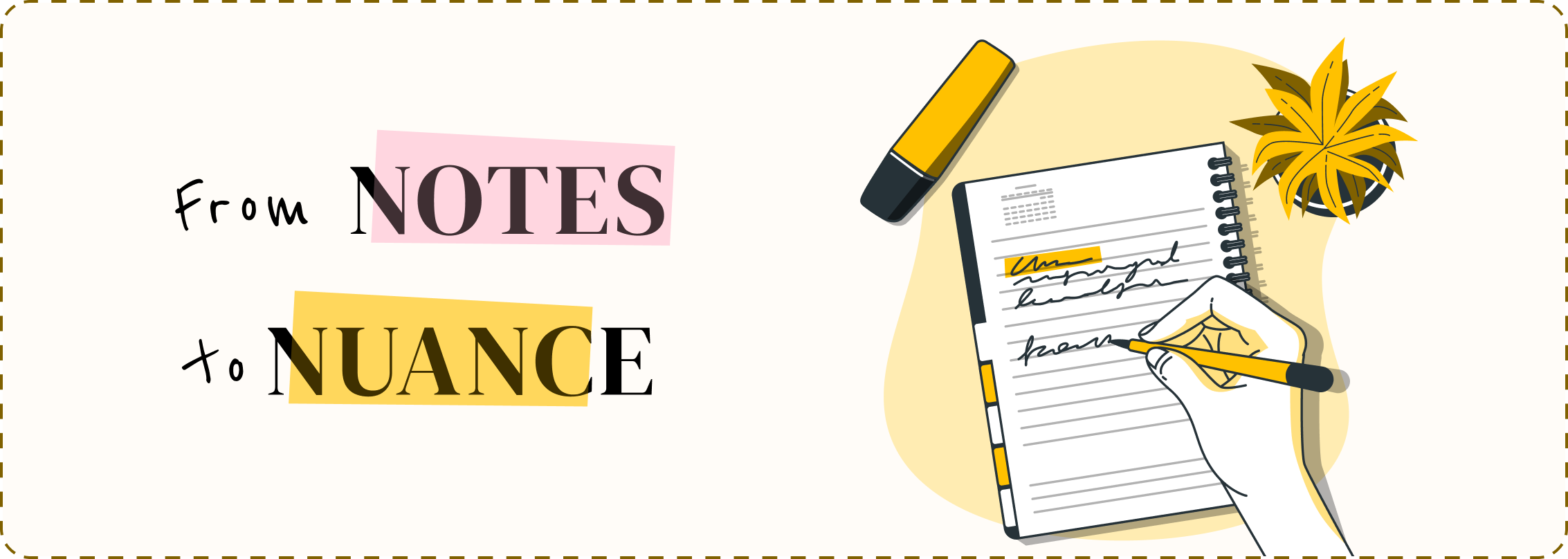Blogs
From Notes to Nuance : Reflections of a Note-taker
Dhanashree Ingale
Posted On April 15, 2025

Being articulate—being able to clearly express what you’re thinking or feeling—isn’t something that comes naturally to most people. And yet, in user research sessions, this is exactly what we ask of participants. That’s where the art of moderation comes in. A good moderator isn’t just asking questions; they’re following a curious, investigative trail, one that creates a safe space for people to discover and express thoughts they didn’t even know they had.
I haven’t moderated sessions myself, but I’ve had the chance to observe quite a few. And in doing so, I’ve come to appreciate how every session—every conversation—has the potential to reveal a deeper layer of human behavior and motivation. Here are four such moments that stood out to me—each one shaping how I think about users, empathy, and inquiry.
Contradictions Aren’t Confusion—They’re Clues
In one session, we were testing a live streaming feature. At the start, a participant mentioned they preferred to be “natural” or “authentic” when creating content. However, when asked about past live streaming the entire interaction – they mentioned they had tried it once before but felt overwhelmed by the idea of being watched by so many people. They wanted to be prepared—not come across as clueless. At first, this seemed to contradict the idea of being “natural” or “authentic” on camera. But this contradiction, when explored further, revealed something deeper: a need for emotional safety and control when performing in a digital public space. That single thread of curiosity changed the way I perceived the feature – it wasn’t just solving for technical and logistical needs, but should also cater to more of the emotional needs of the users.
Interpretation is shaped more by context than explanation.
In another session, a participant was introduced to an AI-powered feature with a detailed explanation. But when asked what they thought the feature did, they simply replied, “It’s for creating groups. I’ve also seen (the AI) in South Indian films.” It was a surprising moment—a reminder that even the most carefully crafted explanations can completely miss the mark. What felt obvious to the designers and us as UX researchers hadn’t resonated at all with the participant. Their response highlighted the impact of limited exposure to AI concepts, especially given their age (60+) and low digital literacy. It underscored how important it is to check not just for comprehension, but for interpretation. An explanation can be clear, but interpretation is shaped by experience.
Familiar Words Can Be Deceptively Vague
Words like “easy” or “convenient” come up a lot in usability sessions—but they’re often placeholders. When researchers gently probed what made something feel easy, participants revealed a range of different values: visual clarity, intuitive navigation, or simply the absence of surprises. It taught me that those surface-level adjectives often mask much more specific—and more actionable—insights. You have to dig beneath the generalities to find what really matters.
Fear Can Hide Behind Practical/Rational Reasons
Finally, during a study on an export logistics platform, participants were asked why they were so meticulous with documentation. The initial answer was about avoiding financial penalties. But when probed further—“What worries you most about getting something wrong?”—a different truth came out: a fear of the unknown. They weren’t just protecting their money; they were trying to navigate a maze of unclear laws and unpredictable regulations. That shift—from financial risk to emotional uncertainty—completely reframed the user’s core need.
Each of these moments taught me about how layered humans are and how to stay constantly curious throughout the session to make sure accurate feedback is captured. That people may say one thing but mean another. That comprehension isn’t the same as understanding. That general terms often hide specific truths. And that behind most cautious behaviors, there’s often an emotional logic at work. Observing skilled researchers peel back these layers has shown me how much depth lies beneath everyday interactions.


